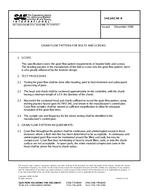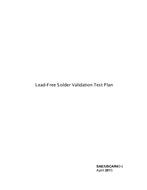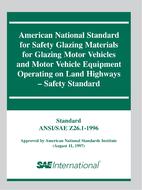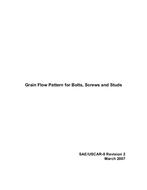Description
This SAE Aerospace Information Report (AIR) presents preferred design, assembly, and repair practices for sealing of aircraft integral fuel tanks, including rework of applied fuel tank seals. It addresses engineering designs for integral fuel tanks as they are currently found in practice; and discusses the most practical and conservative methods for producing a reliable, sealed system.
Although this AIR presents practices for sealing of integral fuel tanks, the practices presented within this report are practices that are carried throughout sealing that include both pressure and environmental aircraft sealing.
Design preferences for optimum sealing are not within the scope of this document. Such discussions can be found in the United States Air Force (USAF) sponsored report, entitled Aircraft Integral Fuel Tank Design Handbook, AFWAL-TR-87-3078.
Key objectives of the fuel tank sealing process are to produce a sealing plane that is leak-free and corrosion resistant, especially at fastener locations, at environmental and operational conditions expected for the life of each aircraft. Factors that can influence the outcome of this process are:
a. How well the basic design lends itself to good sealing (key design factors to consider include accessibility and minimal movement, among others).
b. The choice of sealant; where it is applied; how it is applied.
c. How good substrate surfaces are prepared.
d. Whether sealant fillet dimensions are optimum for aircraft configuration and flight dynamics.
e. The degree of resistance sealant has to fluid and thermal environments.
f. The degree of engineering insurance – i.e., application of adhesion promoters to sealant bond surfaces, application of organic topcoats over sealants, proper drainage of the fuel tank, etc. – employed for technical risk reduction.
Effective and efficient sealing of aircraft fuel tanks are prime considerations in both commercial and military aircraft designs. Note, fillet seals inside fuel tanks are considered to be the primary fuel barrier seals.
Of nearly equal importance is corrosion control. It is generally accepted, for example, that a major objective of faying-surface sealing is corrosion control. The faying-surface seal is not considered to be a primary fuel barrier seal, except in adhesive-bonded systems; the faying surface seal, however, does play an extremely important role as a secondary fuel barrier seal. It limits the length of a leak path and is a permanent, stable, protected, and essentially non-dislodgeable seal that is sandwiched between two mating surfaces. Extensive use of faying-surface sealing is highly recommended.
Sealing philosophies differ within industry and government. However, as stated in 3.1, there is much greater agreement than dispute. If a particular fuel tank sealing approach appears to be clearly more reliable, keeping production cycle time and costs in mind, it will be identified as a preferred method.
This report is based on technical opinions from a broad cross-section of engineering experts who specialize in aircraft sealing.
The user should consider the engineering requirements and options provided by this report; then develop an individual course (or plan) of action from a somewhat more informed position.
Product Details
- Published:
- 11/23/2016
- File Size:
- 1 file , 1.7 MB
- Redline File Size:
- 2 files , 5.7 MB




